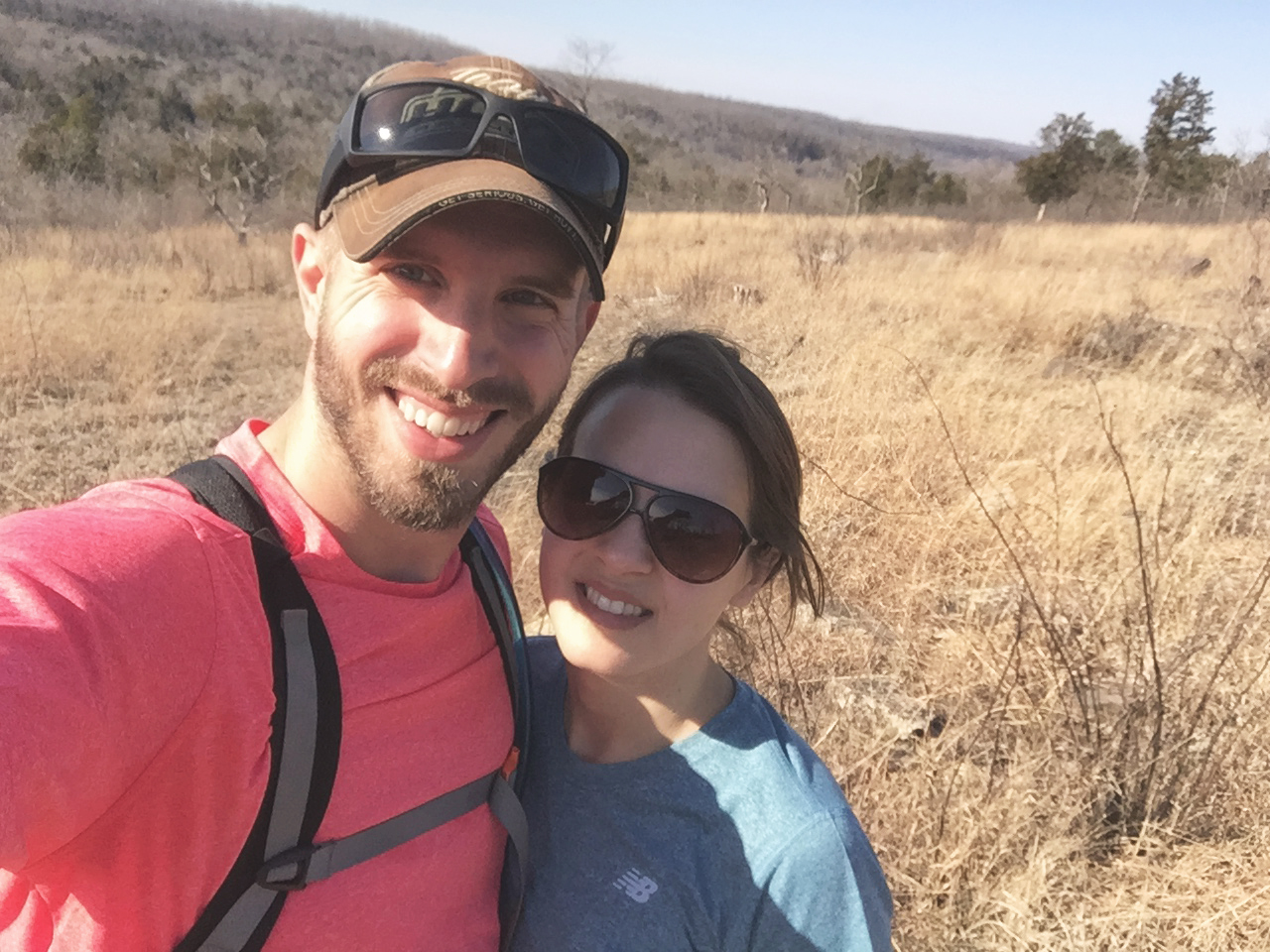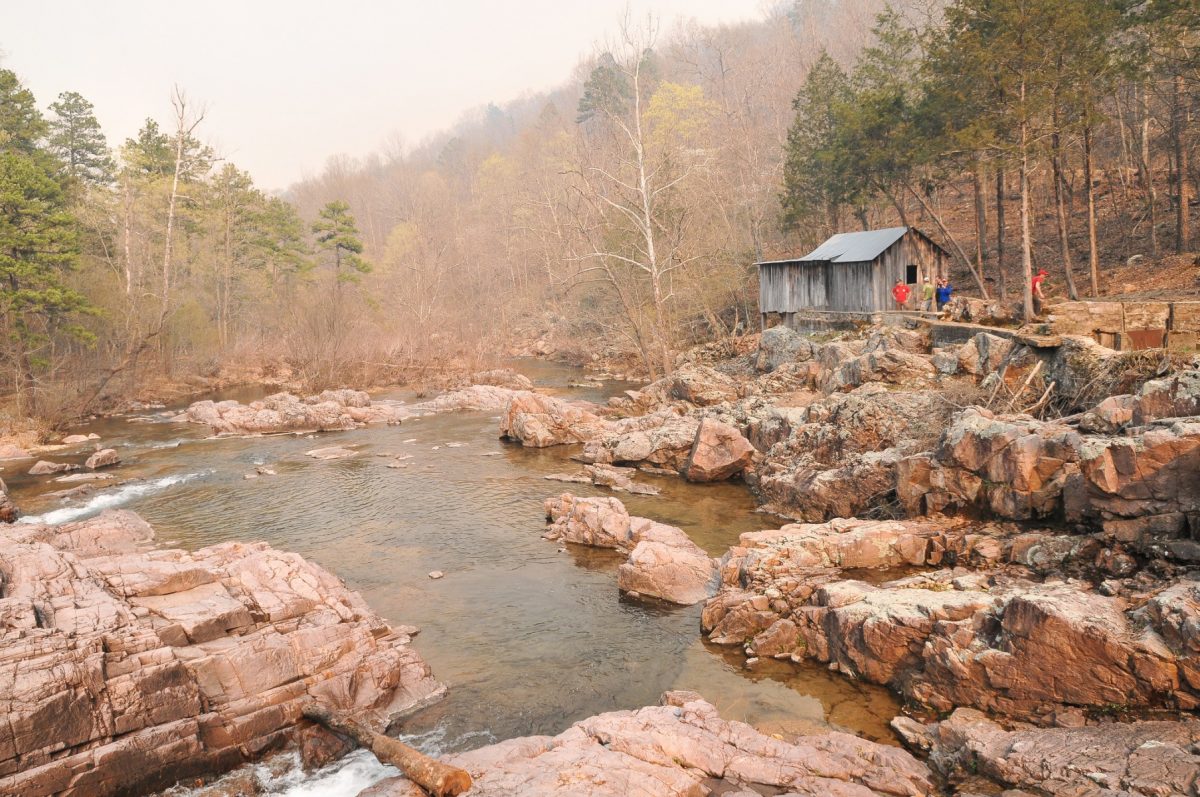This post contains affiliate links.
It’s a 70-degree day, partly sunny. A Thursday, 10:30 a.m. For an hour, I’ve oscillated between “Today’s a perfect day for a hike, let’s do it!” and “No, that’s too much time out of my day.” If I don’t go now, I know I’ll become too distracted by the to-do list I fabricate to ever set it aside. No more thinking: I slam my laptop shut, change my clothes, throw my water and a bag of jerky in my daypack — which is always at the ready — grab my hiking boots and head out the door.
As I pull into the parking lot, the churning of my car’s engine is replaced by the rhythmic sounds of nature. And as soon as my feet hit the trail, my mind is pulled outside of itself — from the incidental to the essential. Just the distraction I needed.
This scene — or some version of it — has been part of my routine since January, when I set the goal to hike at least once a week through all of 2019. It’s a seemingly simple aspiration and, for someone like myself who loves hiking, one that’s also enjoyable.
However, I’ve never been the embodiment of self-discipline — I thought, “A hike a week, no problem. How lucky am I?” — but setting a goal around an activity I love, which I’m intent on achieving, is forcing me to become disciplined in other areas of my life as well.
Like any type of aspiration that requires time, energy and sometimes creativity, even one hike a week can become deceptively challenging a goal to remain committed to.
Ensuring that I have the time to dedicate toward my goal, I’ve realized, means I have to get up earlier. Every day. Instead of waiting for my daughter to wake me with her laughs (or cries) from the other room, I have to set an alarm. And, consequently, no more going to bed at 11 o’clock. It also means taking better care of my body: With more activity, come more aches and pains, thus stretching and foam-rolling at least once a day. And all of this means a more disciplined diet, making sure I’m getting enough protein, specifically, to make sure I can hack it on the trail.
Like any type of aspiration that requires time, energy and sometimes creativity, even one hike a week can become deceptively challenging a goal to remain committed to. But, as the great outdoorsman President Theodore Roosevelt once said, “With self-discipline all things are possible. Without it, even the simplest goal can seem like the impossible dream.”
One of the most significant benefits of largely working for myself is a flexible schedule, but even if you work the traditional nine-to-five job, it is possible to set and achieve outdoor goals. Whether that goal revolves around hiking, backpacking, trail running or simply making an effort to get out in nature more, setting and working to accomplish goals has its benefits.
Here are a few things I’ve learned working toward my goal that may also help you.

Be Realistic.
Don’t set an arbitrary goal. Take the time to consider your schedule, obligations and the time commitment you are willing and able to put in. Also, know yourself. Don’t set lofty goals that you know you won’t commit to actually achieving. Start small if necessary to ensure you remain committed.
What works best for your lifestyle? Do you have three kids and a full-time job? Maybe instead of aiming to hit the trail once a week, you shoot for twice a month. Never been much of an outdoorsman or woman? Perhaps city parks and paved trails are the best place to begin your outdoor adventures. Live in a place with terribly cold and wet winters and/or horrendously hot or humid summers? Consider a flexible goal, like a specific number of outdoor adventures each year as opposed my goal of one each week. That way, if outside conditions are too dangerous, it is still possible to achieve your ultimate goal.
Come Prepared.
That said, don’t let weather and trail conditions completely dictate whether or not you hit the trail. Cold weather hikes, particularly if there is snow on the ground, can be beautiful and serene while hot-weather adventures provide for a good workout. Just make sure you take precautions: Dress appropriately, don’t push yourself too hard, be aware of trail conditions and take the right supplies. Particularly in warmer weather, make sure you bring enough water and be aware of ticks.
With all of the gear that exists nowadays, there is almost no excuse not to get out — even in rainy or snowy weather. Don’t underestimate the power of a good rain coat, waterproof boots (I recommend Columbia’s Newton Ridge Plus), gloves and a hat.
Plan Strategically.
Fitting outdoor goals into a busy schedule is likely one of the most looming barriers to achieving them. That’s why the way in which you schedule or integrate them into your life is key.
If your schedule is not flexible, which is the case with many full-time jobs, try working your outdoor adventures into your work day. I used to work near a park, conservation area and a nature preserve and made a point to frequent those over my lunch breaks. If the weather’s not too hot, this could be as simple as storing your hiking shoes in your car for whenever you need them.
If you have kids, take them with you. It’s good to develop their comfort with and love of the outdoors at a young age anyways.
If lunch breaks don’t work, get up early and try fitting in a morning hike or trail run before the rest of the world is even awake. The weekends are an obvious option, and if you have kids, take them with you. It’s good to develop their comfort with and love of the outdoors at a young age anyways. For very young kids, there are a number of packs and carriers that make taking them on the trail simple. When my husband and I hit the trail with our 15-month-old, we strap her into our Osprey Poco AG.
Also, don’t force yourself into thinking every hike has to be a 6-plus miler. Short trails are fine as well, and I’ve found that many parks near cities have a lot of 1- to 3-mile trails to take advantage of.
Be Aware.
For those who are working solo toward achieving their outdoor goal, it’s even more important to be aware of your surroundings. As a woman hiking once a week — mostly by myself — I’ve had many friends and family ask me if I get scared going out alone. Initially, my only fear, albeit a rather irrational one, was running into a black bear; although their populations are expanding in the Ozarks of southern Missouri, they are not known to live close to St. Louis in any large numbers.
However, after a few times on the trail in which the only sounds were that of a distant highway, I realized how alone I really was and how unlikely it would be that someone would hear me if I called for help — whether I fall and hurt myself or am attacked. After a few times of deer scaring me on the trail (and not the other way around), I purchased pepper spray.

At the very least, tell someone where you are going — down to the specific trail; make sure your cell phone is charged and that you remain aware of your surroundings; and make smart decisions. Working toward your outdoor goals should not just be challenging, it should also be enjoyable, and nagging fear or worry on the trail doesn’t make for a pleasant experience and may make it harder for you to stick with it.
Maintain Your Interest.
Over time, it can become easy to let your goal feel like a chore. Resist this urge! View it as an enjoyable but, yes, regular part of your routine. If you are bored with it, frankly, it’s probably your own fault. Stop going to the same park or hiking the same trail.
Keep it interesting by switching up parks and trails. I am lucky to live within a 30- to 60-minute drive of a wide array of state, city and county parks as well as conservation and natural areas that feature a diversity of landscapes, vegetation and wildlife — from forests and woodlands to savannas and wetlands. Yes, I have hiked a few of the same trails more than once, but most of the time, I am seeking out new trails to test.
If your area doesn’t have as many options for outdoor adventure, there are other ways to make working toward your goal fun or interesting. Take a friend with you or join a hiking, backpacking or trail running group in your area. Sometimes it’s easier to stick with a goal if someone is doing it with you. Another way to keep it interesting is to add another element — perhaps picking up trash along the trail as you go.
The benefits of getting outdoors are obvious: improved health and fitness, mental clarity and cognitive function. Self-discipline, however, is an overlooked asset when it comes to setting and achieving outdoor goals. With these tips in mind, what goals will you set for yourself?





